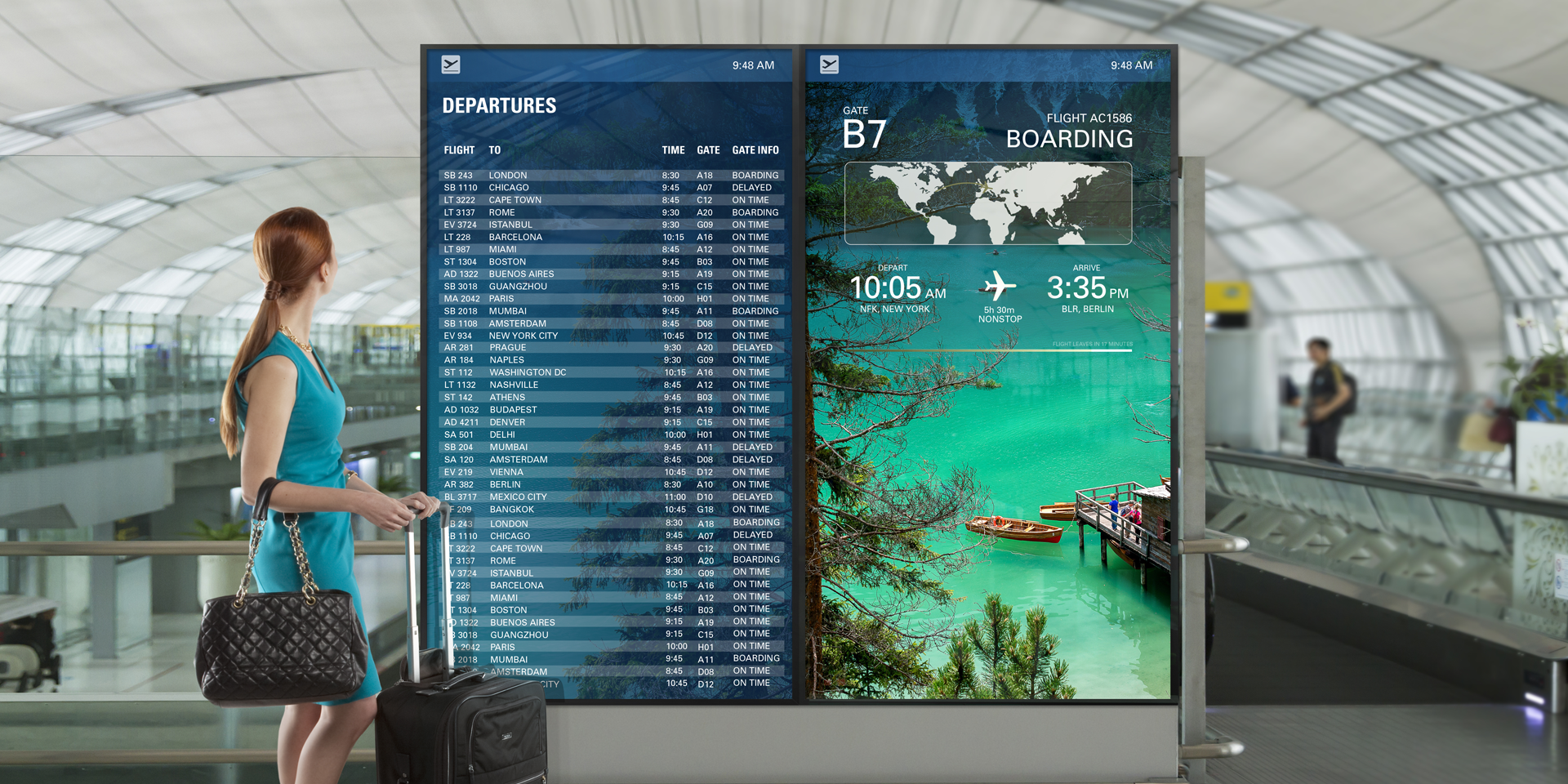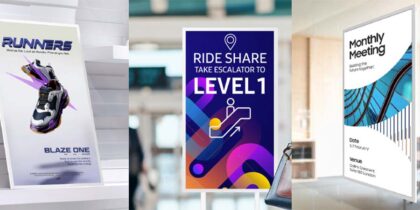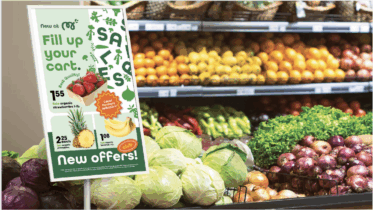Whether its navigating crowded airports, browsing store shelves, checking out a store’s latest deals at the mall, or exploring new destinations, today’s consumers expect instant, reliable access to the information that matters most. They want clear, up-to-date details on product pricing and features. They seek straightforward directions through busy terminals that weren’t last updated two years ago. And they crave smart, timely suggestions for making the most of their downtime. Meeting these expectations requires more than static signs — it calls for a smarter, more dynamic solution.
A well-placed poster has been the most common approach for communicating this kind of information in the past. The future, however, belongs to solutions like Samsung’s Color E-Paper EMDX Series Color QHD Smart Signage, which not only offers consumers the details they need but provides businesses a digital alternative where flexibility meets efficiency.
Measuring 32 inches in an ultra-light, ultra-thin and aesthetically pleasing design, the EMDX series enhances any business space. An advanced color imaging algorithm analyzes optimized content for paper-like visibility and supports reduced contour, enhanced color and smooth gradations. Its lightweight frame, meanwhile, offer businesses flexible placement options.
Given that E-paper is a new area of innovation for most, here’s a simple rundown on the differences between a poster vs. E-paper, and why the latter represents a new platform for digital communication in industries such as retail and transportation.
Cost Savings
It may look like a simple piece of printed material on a wall, but the process of putting up a poster can involve considerable expense. This includes not only printing but shipping and receiving costs, as well as the considerable time spent by paid employees.
Digital signage content management made easy
Get your complete guide to configuring and tailoring real-time messaging using an integrated CMS. Download Now
When posters require new content or updated information, for instance, staff need to physically visit every spot. This is followed by time spent unpacking posters, physically installing them and disposing those that are no longer relevant. These labor costs add up over time and take away from the opportunity to allocate the same team resources elsewhere.
Samsung E-Ink solutions such as the EMDX series provide an affordable alternative because they can be freely moved in wireless mode or connected with a single PoE dongle. It’s increasingly easy for someone to unpack, connect and install in a matter of minutes.
Once they’re in operation, devices are controlled both locally and remotely via Samsung’s broad suite of compatible solutions such as the dedicated Samsung E-Paper app or the content management system VXT. This way, content is updated without having to check the budget for labor costs.
Low energy consumption
Industry-leading organizations across retail, transportation and many other sectors are increasingly focused on taking responsibility for reducing carbon emissions and promoting more sustainable business processes. E-paper can contribute directly to this effort.
For instance, the EMDX series includes an embedded battery that balances efficient operation with low energy consumption of less than 0.005W. This translates into a display that will last up to 199 days once fully charged for three hours when in Network Standby Off Mode.
The EMDX series housing also contains recycled plastics, and its packaging — including the box cushion, handle and accessory box — is all crafted from paper that can easily be recycled rather than going to a landfill.
Enhanced customer engagement
Another key difference with using a poster vs. E-paper is that the former is limited to static, one-way communication between businesses and consumers. The EMDX series’ capabilities mean retailers and transportation firms can get more creative and drive more dynamic interactions with passengers and customers.
Think about how a display using Samsung E-Paper can showcase featured products one week and then shift to flash sales and promotions the next. In airports and terminal stations, E-paper displays can act as digital information boards, where updates can be rolled out seamlessly, and even remotely.
Best of all, the EMDX series provides businesses with omnichannel messaging options. Customers can scan a QR code to get taken to landing pages or websites. E-paper also takes it one step further and can connect to mobile apps and offer digital check-in options.
Seamless wayfinding
Retailers often need to change product assortment and sometimes even move entire departments from one area to another. And gate changes happen at airports every hour, with departures and arrivals often shifting, too. This is why businesses not only need to create a welcoming environment, but one that customers and passengers can easily navigate.
Samsung E-Paper addresses this directly by providing a highly visible means of pointing out landmarks and placing airport gates and store departments on a simple map. When the route from A to B needs to change at the last minute, the team can do so without any headaches since Samsung VXT integrates both content management and remote device management capabilities.
Staff can manage hardware settings, troubleshoot issues and effortlessly create and deploy content across E-paper solutions like EMDX without requiring previous training. Instead, they can focus more than ever on simply assisting customers and passengers in getting where they need to go.
There’s no need to debate using a poster vs. E-paper any longer. Solutions like the Samsung Color E-Paper EMDX series are giving businesses the hassle-free way to digitize the traditional paper experience they have been waiting for.
Learn more about how Samsung Color E-Paper EMDX Series can provide your business with a new form of digital communication for your customers.









